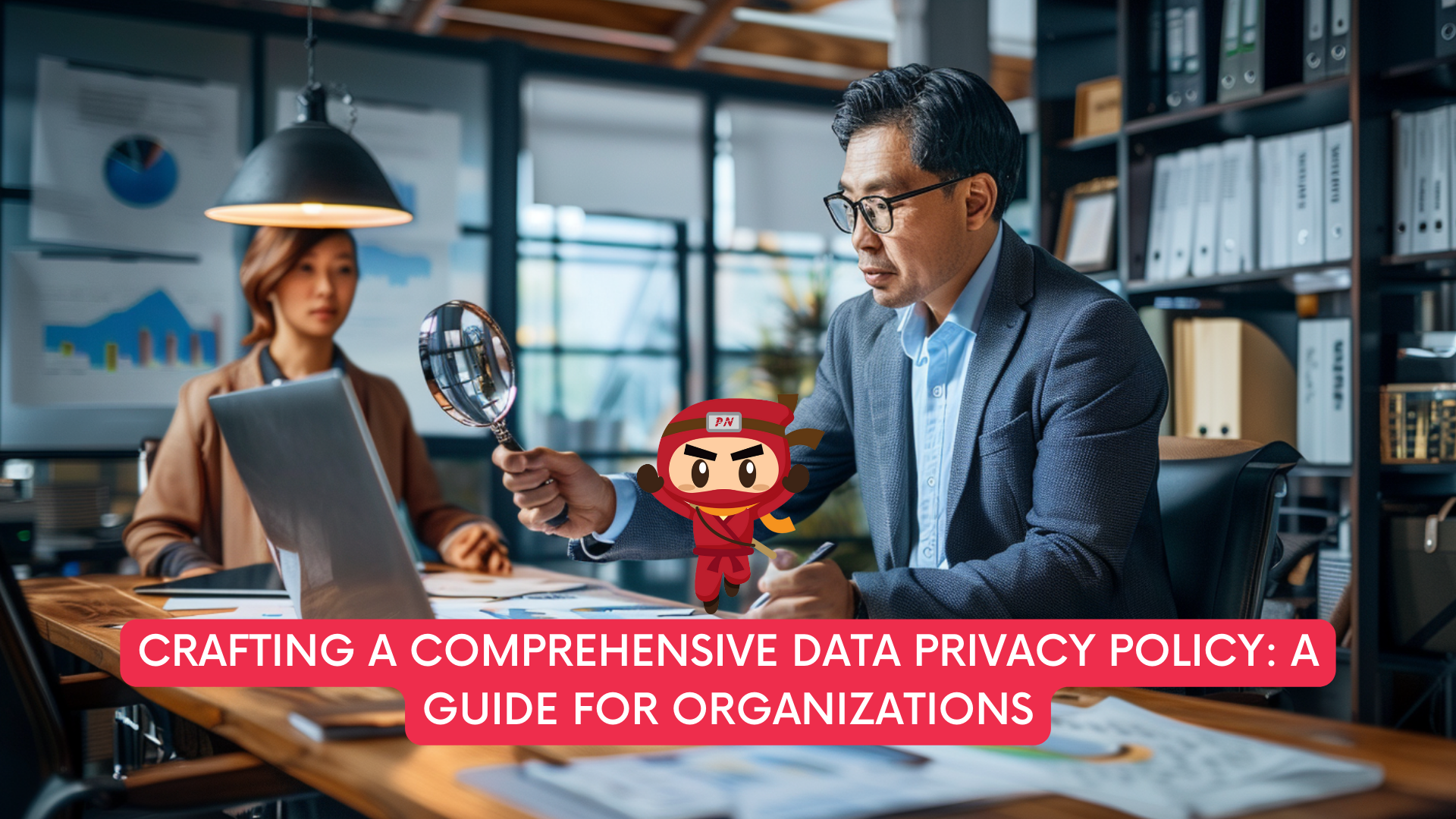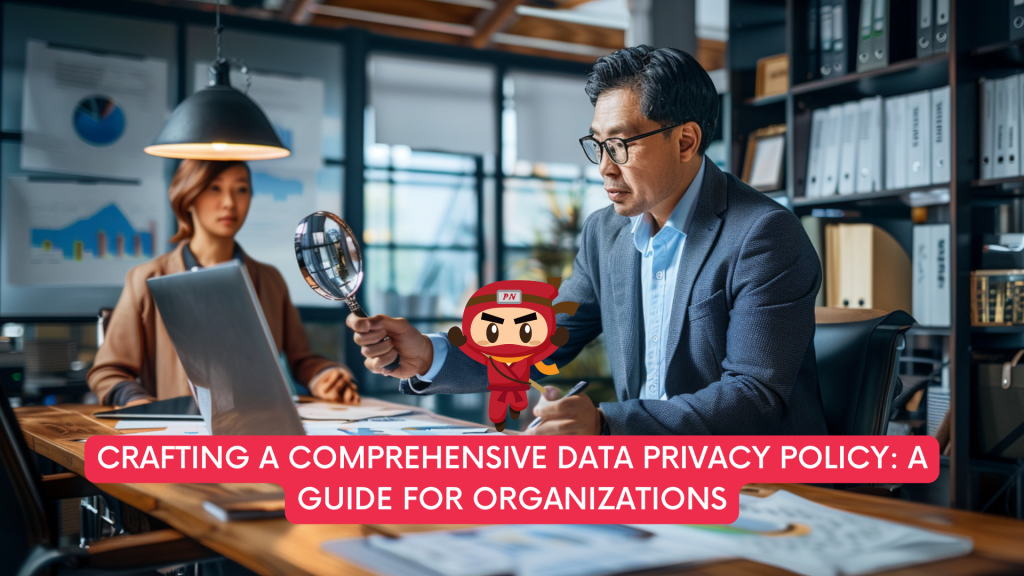KEEP IN TOUCH
Subscribe to our mailing list to get free tips on Data Protection and Cybersecurity updates weekly!







In an era where data privacy concerns are at the forefront of public discourse and regulatory scrutiny, having a robust data privacy policy is essential for organizations of all sizes. A well-defined data privacy policy not only helps protect sensitive information but also establishes trust with customers, partners, and stakeholders. In this article, we’ll outline the key steps to creating a comprehensive data privacy policy that aligns with regulatory requirements and best practices.
The first step in creating a data privacy policy is to understand the relevant laws and regulations that govern the collection, use, and protection of personal data. Depending on your organization’s jurisdiction and the nature of your business, you may need to comply with regulations such as the General Data Protection Regulation (GDPR), the California Consumer Privacy Act (CCPA), or industry-specific regulations. Conduct a thorough review of these laws to ensure that your data privacy policy is compliant and up to date.

Clearly define the scope and purpose of your data privacy policy to establish the framework for how personal data will be collected, processed, and protected within your organization. Outline the types of personal data you collect, the purposes for which it is used, and the legal basis for processing it. Be transparent about your data practices and communicate clearly with stakeholders about how their data will be handled.
Identify key stakeholders within your organization who will be responsible for implementing and enforcing the data privacy policy. This may include senior management, legal counsel, IT personnel, and data protection officers (DPOs). Clearly outline their roles and responsibilities in relation to data privacy compliance, accountability, and incident response.
Develop clear and comprehensive procedures for handling personal data throughout its lifecycle, from collection to disposal. Specify the methods for collecting data, the purposes for which it will be used, and the measures taken to ensure its security and confidentiality. Implement data minimization principles to collect only the data that is necessary for the intended purpose and limit access to personal data to authorized personnel.
Implement appropriate technical and organizational security measures to protect personal data from unauthorized access, disclosure, alteration, or destruction. This may include encryption, access controls, data anonymization, and regular security audits. Ensure that your organization has measures in place to detect and respond to data breaches in a timely manner and that employees are trained on security best practices.
Be transparent with individuals about your data practices and provide them with clear and accessible information about how their data is collected, used, and shared. Obtain explicit consent from individuals before collecting their personal data and provide them with options to opt out or withdraw consent at any time. Implement mechanisms for individuals to access, rectify, or delete their personal data upon request.
Regularly audit and review your data privacy policy and practices to ensure ongoing compliance with laws and regulations and to identify areas for improvement. This may involve conducting internal assessments, external audits, and privacy impact assessments (PIAs) to identify risks and vulnerabilities in your data handling processes. Take prompt action to address any identified issues and update your data privacy policy accordingly.
Provide ongoing training and education to employees and stakeholders about data privacy best practices, their rights and responsibilities, and the importance of compliance with the data privacy policy. Foster a culture of privacy within your organization by promoting awareness and accountability at all levels.

Creating a robust data privacy policy is a critical step in protecting sensitive information, maintaining regulatory compliance, and building trust with stakeholders. By following these key steps and implementing best practices, organizations can develop a comprehensive data privacy policy that effectively safeguards personal data and mitigates the risks associated with data privacy breaches. A proactive approach to data privacy not only enhances organizational resilience but also demonstrates a commitment to respecting individuals’ privacy rights and fostering trust in the digital age.
Your appointed DPO can work with you on your PDPA compliance, ensuring that there will be policies in place to make sure that the handling of personal data is PDPA compliant.
A Data Protection Officer (DPO) oversees data protection responsibilities and ensures that organisations comply with the Personal Data Protection Act (PDPA). Furthermore, every Organisation’s DPO should be able to curb any instances of PDPA noncompliance as it is the officer responsible for maintaining the positive posture of an organisation’s cybersecurity.
DPOs complement organisations’ efforts to ensure that the organisation’s methods of collecting personal data comply with the PDPA. It also ensures that policies are set in place to make sure that there will be no instances of data breaches in the future.
Don’t wait any longer to ensure your organisation is PDPA compliant. Take our free 3-minute PDPA Compliance Self-audit checklist now, the same “secret weapon” used by our clients to keep them on track. Upon completion, we will send you the results so you can take the necessary action to protect your customers’ data. Complete the free assessment checklist today and take the first step towards protecting your customers’ personal data.